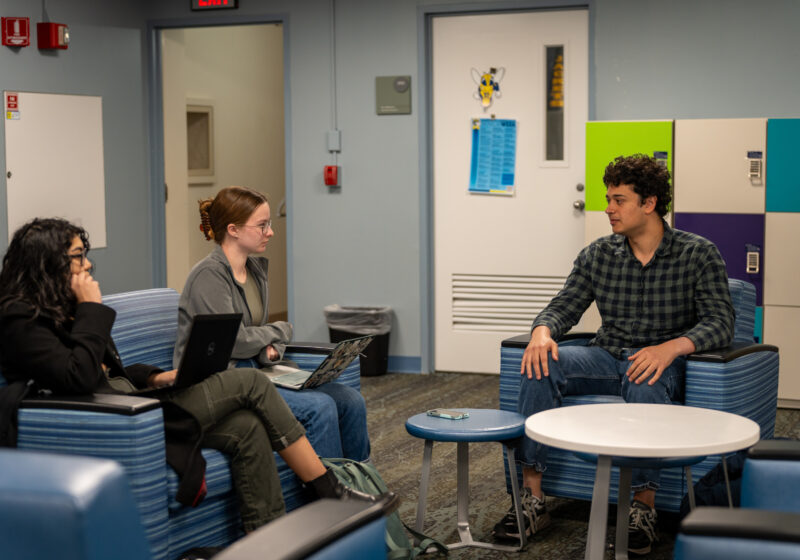The Woodwind Chamber Music concert on Thursday, Jan. 15, in Kilbourn Hall, featured only woodwind quintets scored for the standard combination of flute, clarinet, oboe, bassoon and horn. Each group showed remarkable stamina by performing very long pieces. The event lasted one hour and 45 minutes. The opening piece was “Kleine Kammermusik fr fnf Blser”- small chamber music for five wind instruments – by Paul Hindemith. The lightheartedness and charm of the composition are somewhat impaired by its rigid formal symmetry and the composer’s use of repetition over variation.Hindemith’s musical language, based on his own intervallic theory, combined with the very obvious neoclassical style of the quintet unfortunately resulted in a work lacking musical drive. The only thing that holds this piece together is the form, which occasionally becomes a little too predictable. Fortunately, the players captured the wit and humor of the piece and managed to keep the upbeat mood and lightness of articulation throughout their performance. Horn player Andrew Stephenson deserves special congratulations for his soft yet sharp rhythmical execution of the third movement. Carl Nielsen’s quintet op. 43 was much longer then Hindemith’s “Kammermusik,” and much more stylistically unoriginal. The neoclassical influence on Nielsen is palpable just as it is on Hindemith, but whereas Hindemith’s music has an original style and recognizable sounding, Nielsen’s does not. Nielsen’s quintet, though, is unpretentious, without any dramatic climaxes. The “Praeludium” to the last movement, “Thema con variazione,” is the best part of the piece. Its postponed resolution into the theme came as a surprise after a very chromatic section and a flute cadenza. The variations followed the classical examples of Mozart, including the typical arpeggiations, minor variation and a virtuosic finale. The third piece on the program was written by Franz Danzi. After Hindemith’s stiff formal usage of classical form and Nielsen’s style of imitating the classical language, Danzi’s music was a breath of fresh air. In Danzi’s piece, tonality is still new and not old, fresh and not outdated. The idioms of form and style had not yet become a theoretical concept of the later generations. The mood which Danzi conveys in his quintet is light and happy, not only because of the major dance-like melodies, but also because, contrary to Nielsen’s op. 43, Danzi’s work sounds like it belongs to its rightful place in the history of music. The performance, given by Leslie Skolnik, Jenni Guhl, Kate Denny, Lynn Grossman, and Megan Barclay, was extremely tasteful, exemplifying a high understanding and correct execution of phrasing, tempi and performance practice in general. The concert concluded with David Maslanka’s “Quintet for winds No. 3,” composed in 1999. This neoromantic composition was undoubtedly the most technically challenging work on the concert. The wedge-like opening of the piece required excellent coordination of dynamics and attack and the extremely fast third movement called for not only for ensemble unity, but also for high virtuosity on every performer’s part. The scoring on the third movement proved excellent knowledge of orchestration. Maslanka builds up its opening section slowly and with consistency of tension. The transition before the return of the first section is ingenious in its simplicity – a loud unresolved dominant chord slowly decreases in voices and dynamics until the listener begins to feel uncomfortably unsure of whether or not the resolution is actually going to arrive. When it does, it builds up slowly, similar to the beginning until the tonic prolongation satisfies the tension of the entire piece. Andrea Reges, Mara Mayer, Sara Parulski, Lobo Ratana and Erin Ridenour, horn, performed excellently. They knew the piece very well, and they also had their own ensemble interpretation. The woodwind chamber music concert was a big success. All performers received well-deserved applause. Each group was greeted with loud cheers from the audience both before and after their spectacular performance. Director Anne Harrow had selected an ambitious, ineresting, diverse and long program, which would make anyone curious to attend future woodwind chamber music concerts this semester.Fol can be reached at afol@campustimes.org.
influencer
Riseup with Riseman
“I decided to make one for fun — really poor quality — and I put it on my Instagram just to see how people would react," Riseman said.
divestment
An open letter to all members of any university community
I strongly oppose the proposed divestment resolution. This resolution is nothing more than another ugly manifestation of antisemitism at the University.
data
The NBA’s MVP candidates
Against the Cleveland Cavaliers, center Nikola Jokić posted 26 points, 18 rebounds, and 16 assists in 35 minutes. That same…
